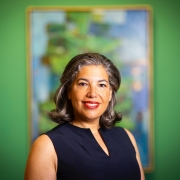Pebbles on Mars Likely Traveled Miles Down a Riverbed

While new evidence suggests that Mars may harbor a tiny amount of liquid water, it exists today as a largely cold and arid planet. Three billion years ago, however, the situation may have been much different.
In 2012 the Mars Curiosity rover beamed images back to Earth containing some of the most concrete evidence that water once flowed in abundance on the planet. Small, remarkably round and smooth pebbles suggested that an ancient riverbed had once carried these rocks and abraded them as they traveled.
To Douglas Jerolmack, a geophysicist at the University of Pennsylvania, and his collaborator Gábor Domokos, a mathematician at Budapest University of Technology and Economics, Curiosity's findings raised a fundamental geological question: Can we use shape alone to interpret the transport history of river pebbles—on Mars, Earth or any planet?
“Thousands of years ago, Aristotle pondered the question of pebbles on the beach and how they become rounded,” said Jerolmack, and associate professor of earth and environmental science. “But until recently, descriptions of pebble shape have been qualitative and we lacked a basic understanding of the rounding process.”
Now that has changed. In a new report in Nature Communications, Jerolmack, Domokos, and colleagues report the first-ever method to quantitatively estimate the transport distance of river pebbles from their shape alone. The researchers’ estimate that the Martian pebbles traveled roughly 30 miles from their source, providing additional evidence for the idea that Mars once had an extensive river system, conditions that could support life.
To view the full article, click here.





